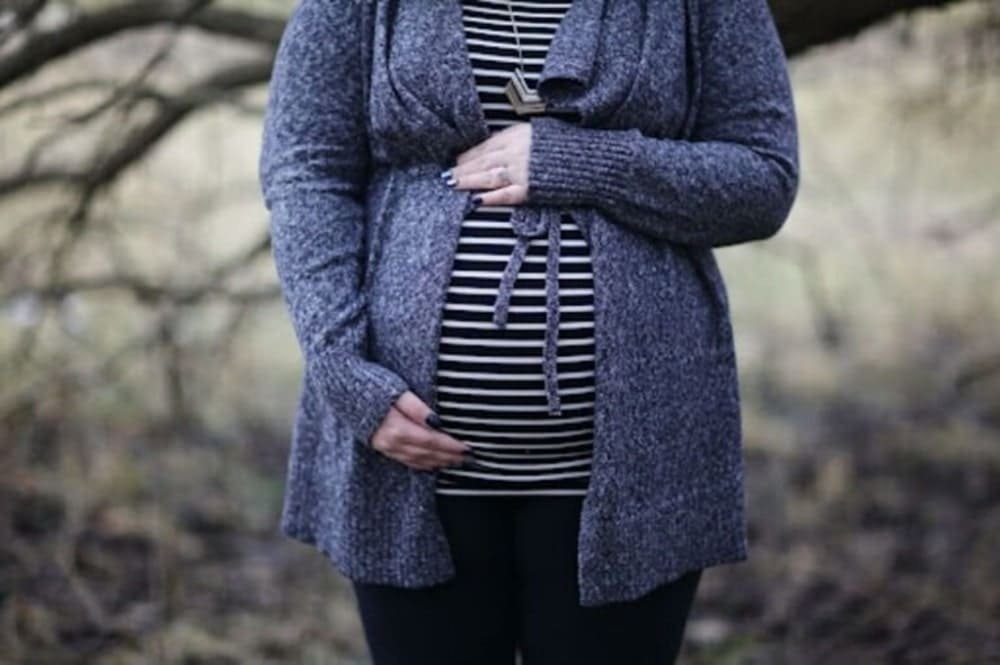Stretch marks after pregnancy | A common frustration
Stretch marks after pregnancy

Stretch marks after pregnancy are a woman’s ultimate dread.
Having a new baby can be a beautiful experience but is sometimes spoiled by several postpartum problems like stretch marks and c-section scars.
Well, fear not dear mom, avoiding such problems may be easier than you think!
Stay tuned to learn all about stretch marks and how to avoid them during pregnancy.
But first, let’s learn what they are and what causes them.
What are the stretch marks after pregnancy?
Stretch marks on a pregnant belly are a type of scar called Striae gravidarum.
They appear after birth in the form of white, red, pink, black, blue, or purple streaks or marks, and their color varies according to the following:
- Cause.
- Place.
- Duration of its existence.
- Skin type.
Also, stretch marks do not cause pain, but they may sometimes itch.
When do stretch marks appear in pregnancy?
Stretch marks on a pregnant belly appear around the sixth or seventh month of pregnancy and last until after the baby is born.
The matter varies from one woman to another according to several factors, such as:
- Genetic factors.
- Age.
- Weight.
- Having a previous infection with cracks in the abdomen before pregnancy.
- The degree of skin stress.
What causes stretch marks after pregnancy?
Stretch marks get their name because they appear due to the rapid expansion of the skin during pregnancy.
The skin’s middle layer (dermis) becomes stretched and broken in places, causing scars or lines.
There are also several reasons for the occurrence of stretch marks, such as:
- Pregnancy.
- Sudden weight gain or loss.
- Having a family history of infection.
- Using cortisone orally or topically; weakens the skin’s elasticity.
- Having a genetic disorder, for example, Cushing’s syndrome or Marfan syndrome.
What is the difference between white and red stretch marks?
Stretch marks begin to turn red due to blood vessels under the skin, which gives them their color, and this stage is easy to treat.
Due to narrowing blood vessels, red marks turn white over time, and it is the most challenging stage of treatment.
How long does it take stretch marks to fade?
The red lines disappear quickly after giving birth within 6 to 12 months.
Their color turns pale pink or white, reducing their appearance, but their texture remains the same.
Do teenagers get stretch marks?
Stretch marks are common in both male and female teenagers during puberty due to the rapid growth or weight gain that comes with it.
There are also other factors that increase the chance of teenage stretch marks, such as:
- Genetic factors.
- Obesity.
- Use of corticosteroids.
Now let’s get acquainted with typical treatments for stretch marks and answer the following question, what is the best pregnancy stretch marks cream?
How to get rid of stretch marks after pregnancy?

Unfortunately, it is not possible to completely treat stretch marks, but some methods and treatments can be used to relieve them, including the following:
Chemical peeling
It is a cosmetic procedure to exfoliate the skin with glycolic acid performed by a dermatologist or plastic surgeon.
Laser treatment
The laser stimulates collagen production and restores the skin’s elasticity and thickness, but the disadvantage is the high cost and repeated sessions.
Microdermabrasion peeling
It is used to improve skin elasticity and texture in other conditions as well, such as:
- Wrinkles.
- Acne scars
- Pigmentation.
- Damage caused by sun exposure.
- Other skin problems.
Microneedling
Reduces scars and wrinkles and improves stretch marks within a month, with 4 to 6 sessions.
Radio Frequency
It is also used to tighten the abdomen and get rid of sagging.
It depends on energy reaching the skin layers and stimulating collagen production.
Gels or topical creams containing hyaluronic acid
The best creams for stretch marks after pregnancy are the ones containing hyaluronic acid since they quickly restore the skin’s vitality.
Creams containing tretinoin
They reduce the appearance of stretch marks after pregnancy if used daily; It stimulates collagen production.
The doctor prescribes it in some cases, but it is contraindicated during pregnancy or natural breastfeeding.
Creams containing cocoa butter or vitamin E
Cocoa Butter and Vitamin E are two of the most powerful moisturizers used to prevent stretch marks during and after pregnancy.
Olive oil, almond oil, or coconut oil
Pregnant women use these oils as a moisturizer due to their role in skin collagen formation preventing stretch marks during and after pregnancy.
Home remedy for stretch marks after pregnancy
Here is an easy-to-make and low-cost home recipe that can help reduce stretch marks after pregnancy
Mix a cup of sugar with a quarter cup of coconut oil with a few drops of lemon and use it as a natural scrub several times a week, and don’t forget to moisturize afterward.
Tips to prevent stretch marks after pregnancy
To prevent stretch marks, follow these tips:
- Moisturize the skin regularly with moisturizing creams or oils from the beginning of pregnancy until after birth.
- Moisturize the body with aloe vera gel after showering.
- Eat healthy food to maintain weight and avoid sudden increases or decrease.
- Perform simple sports to maintain skin elasticity and stimulate blood circulation.
- Drink enough water to prevent dry skin, especially in high temperatures.
- Visit a dermatologist if red stretch marks appear after childbirth to determine the appropriate treatment early.
In conclusion, having a new baby is a magical experience.
Don’t let stretch marks after pregnancy spoil your joy for your new baby, but think about your recovery first, and those cracks will go away with some simple treatments.
Read Also;
The best diet for a pregnant woman | What not to eat?
Eclampsia | All you need to know